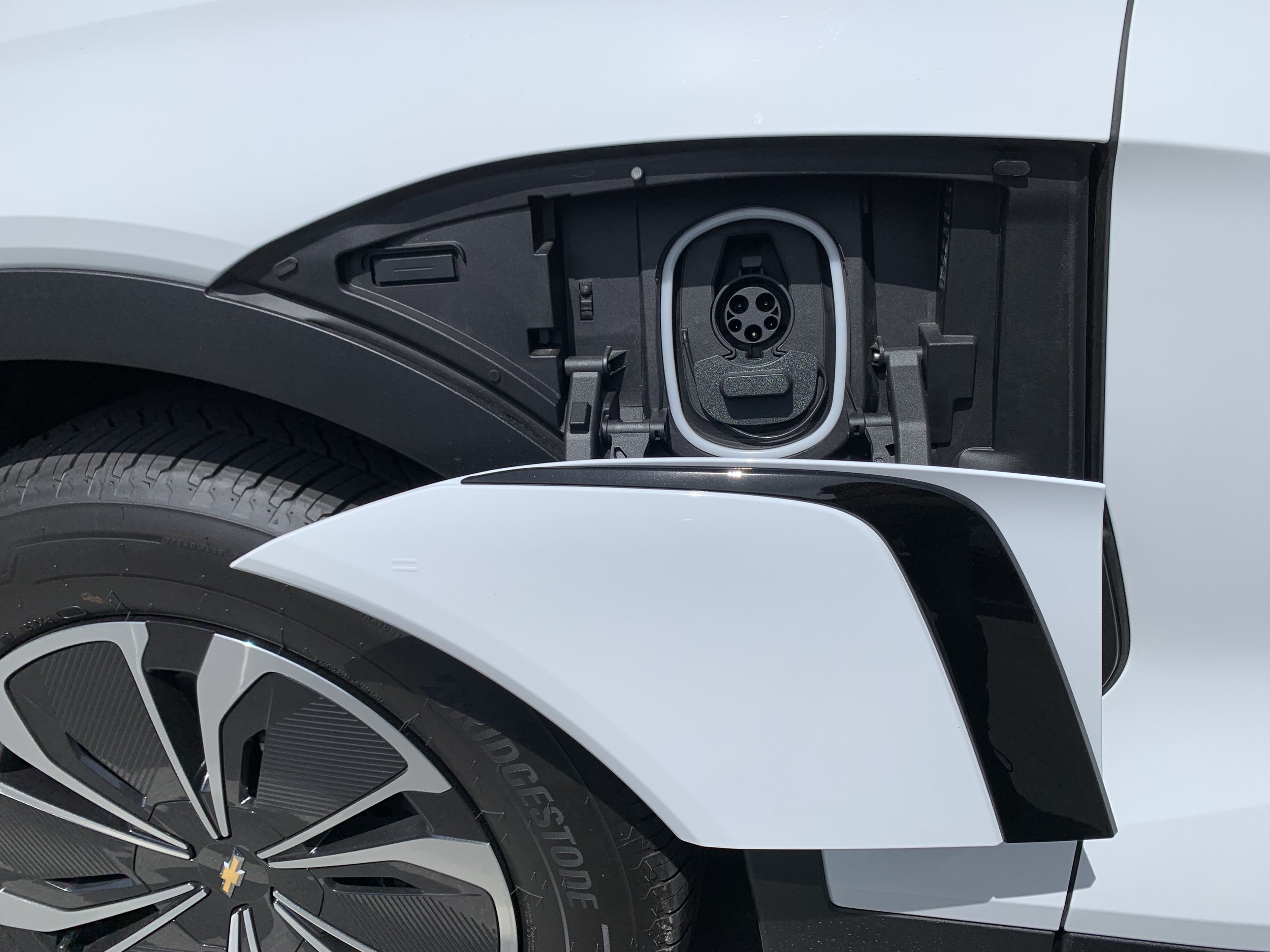Chevrolet Blazer EV: Blazing a Different Path
The All-new Blazer EV
The Chevrolet Blazer is an absolutely iconic name that was first used in 1969. For most of its history, the Blazer has been attached to rugged Sport Utility vehicles and has been GM’s rival to the Ford Bronco for many years. In 2019, GM did the unthinkable and used the Blazer nameplate for a midsized crossover. While this new Blazer was good, many fans of the old version were outraged. Then for 2024, in a rather confusing move, Chevrolet decided to use the name again on a new electric crossover that is unrelated to the one launched in 2019. Chevrolet now offers a Blazer and Blazer EV within their lineup. While both may be midsized crossovers, they are styled differently and have slightly different dimensions. So why did Chevy decide to call this vehicle a Blazer? Well it’s possible that they plan to eventually phase out the gas Blazer one day in the distant future and when that happens, the transition to the Blazer EV becomes a very easy one. But until that actually happens and I hear Chevrolet is redesigning the gas Blazer soon, there will likely be plenty of confused shoppers at Chevy dealerships. Name aside, the Blazer EV is actually a very strong entry from Chevrolet in the increasingly crowded electric crossover segment. Its handsomely designed inside and out, roomy and quick. This new EV has already won many prestigious awards and this vehicle shows that GM is serious about making really good EVs. Even though it’s not the Bronco fighter we were hoping for, the Blazer EV is blazing down a different path that’s new territory for GM and Chevrolet.


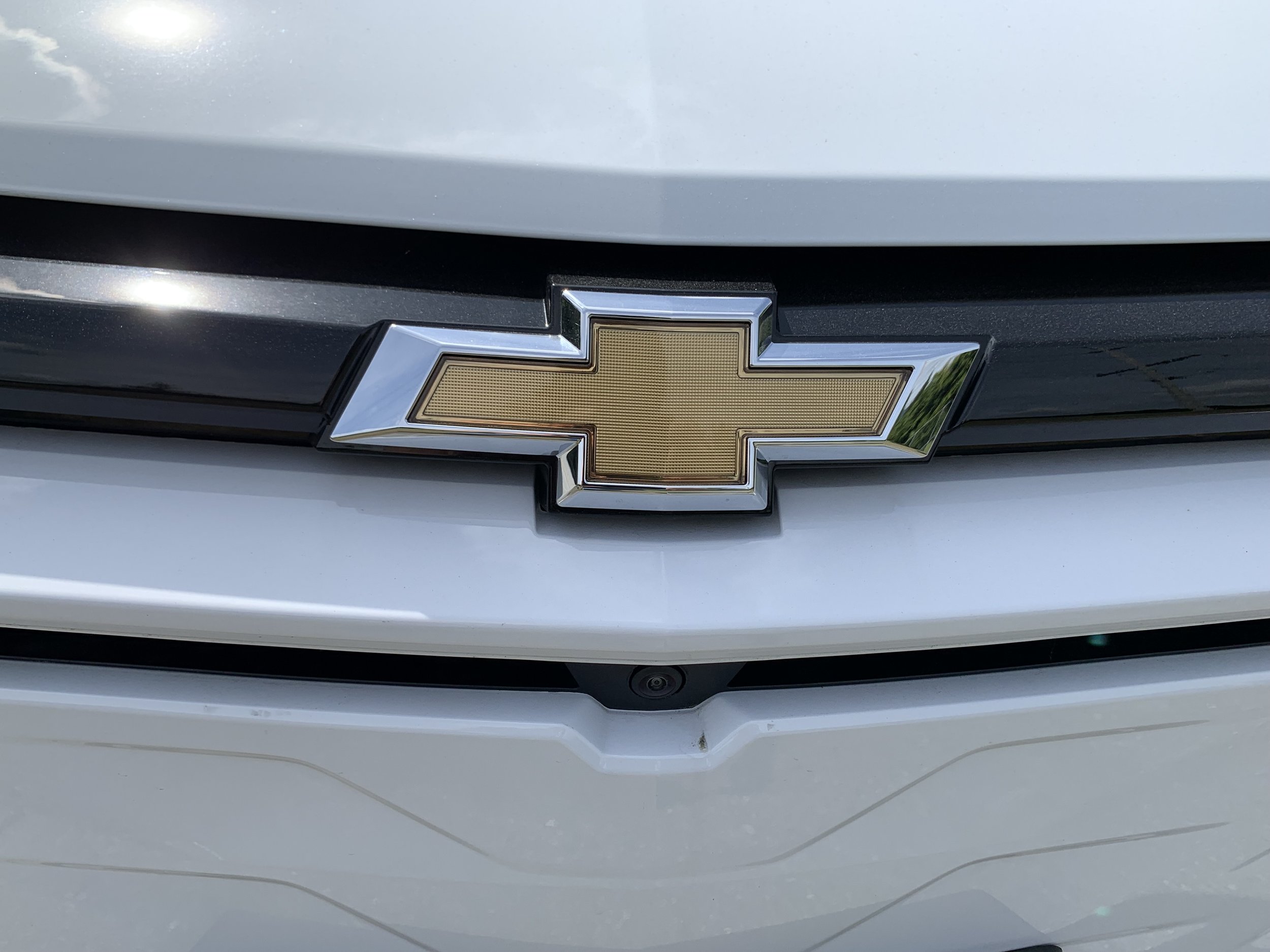
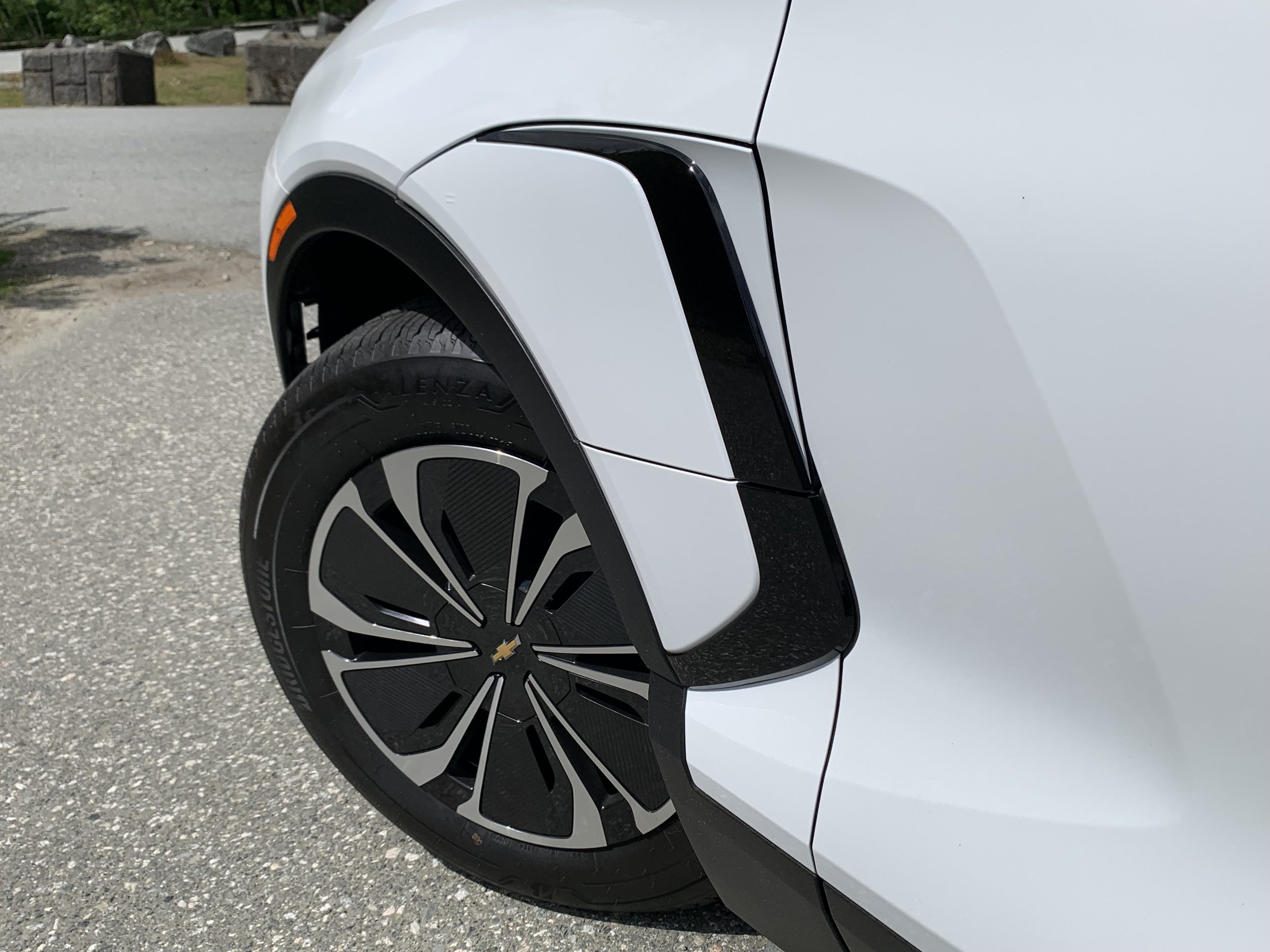


Exterior Design: Swoopy and curvy
As mentioned earlier, Chevrolet has two Blazers in their lineup. They are both mid-size crossovers but the Blazer EV is a little longer and wider than the standard Blazer, yet shorter in height. The Blazer EV bears a passing resemblance to the gas version, however the EV features a more forward thinking aerodynamic look.
Flared fenders and curvaceous lines create a Coke bottle shape design
The Blazer EV has a thin bar grill that connects to the headlamps. This bar lights up in the RS and SS versions and makes the vehicle quite striking. The vehicle features a rising belt-line with curvy character lines that are accompanied by flared fenders. Because of this, the Blazer EV has a coke bottle shape that has been the basis of many great automotive designs. From the back the Blazer EV’s low profile makes it look a little squatty, similar to wagons from the 1990’s. However, this is not a drawback as the unique boomerang taillights and overall style save this vehicle from looking overly bloated.
Blazer EV has a low rear profile
The Blazer EV appears sportier than rugged and I believe that is exactly what Chevrolet was trying to achieve. By connecting this important crossover to vehicles like the Corvette and Camaro, Chevy is trying to create a direct link between the halo cars and mainstream vehicles within their lineup. Basically they are trying to positively build up the brand, which is something that many other brands have successfully been doing for years. Personally I think the Blazer EV is an attractive crossover that looks bold without trying to be overly futuristic. It’s a vehicle that will get noticed and based on style alone should have no problem attracting potential buyers.




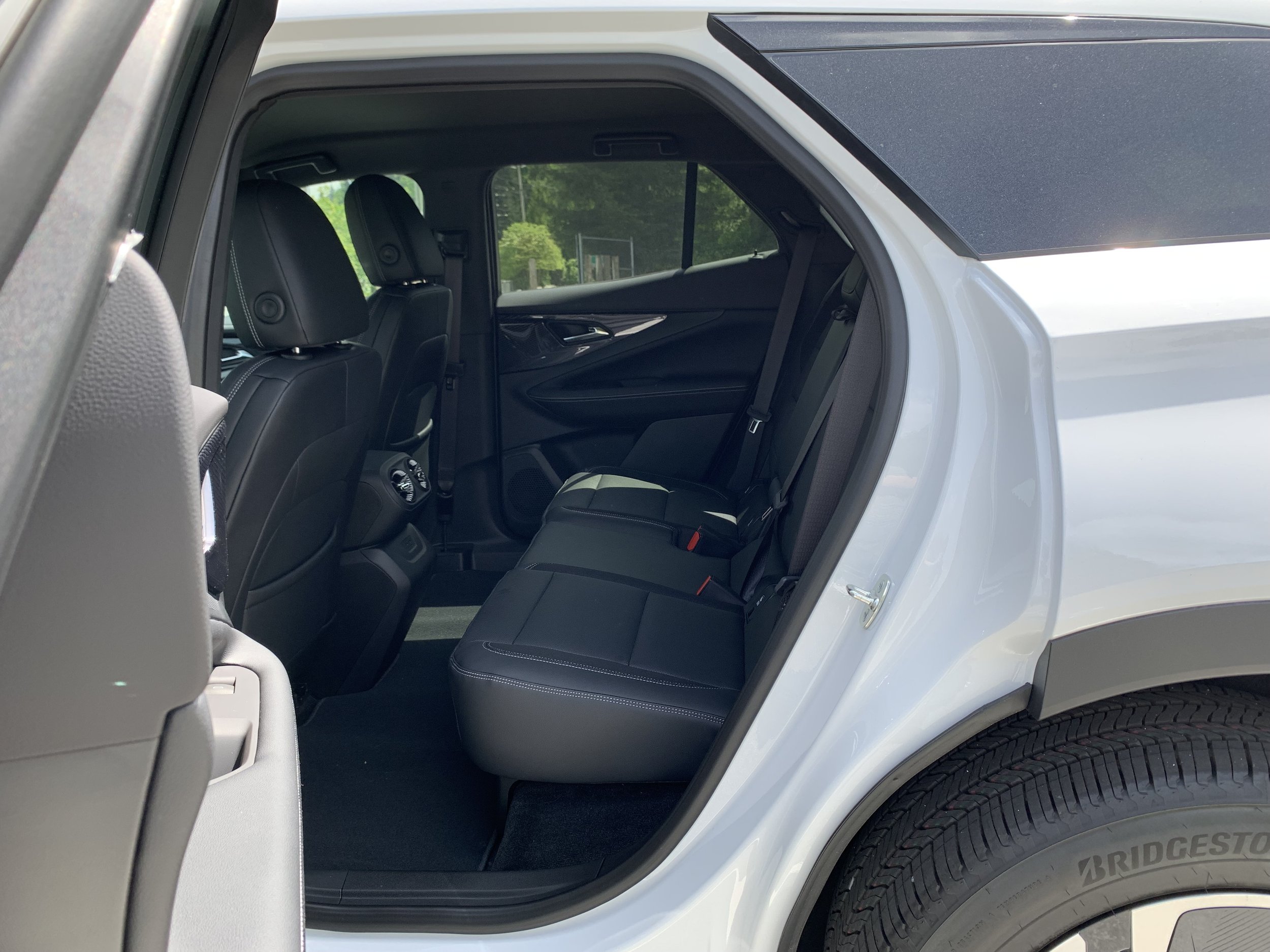
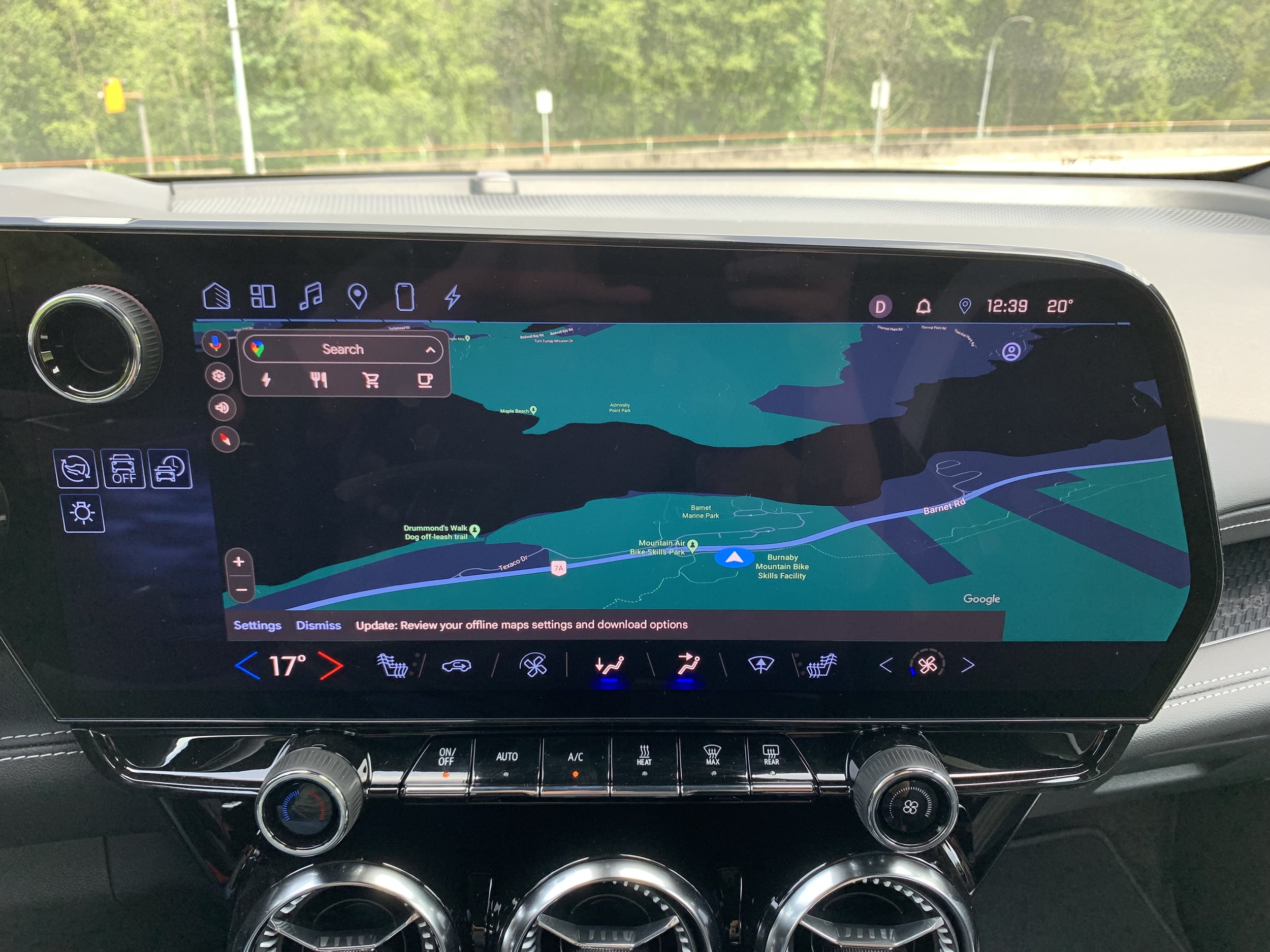
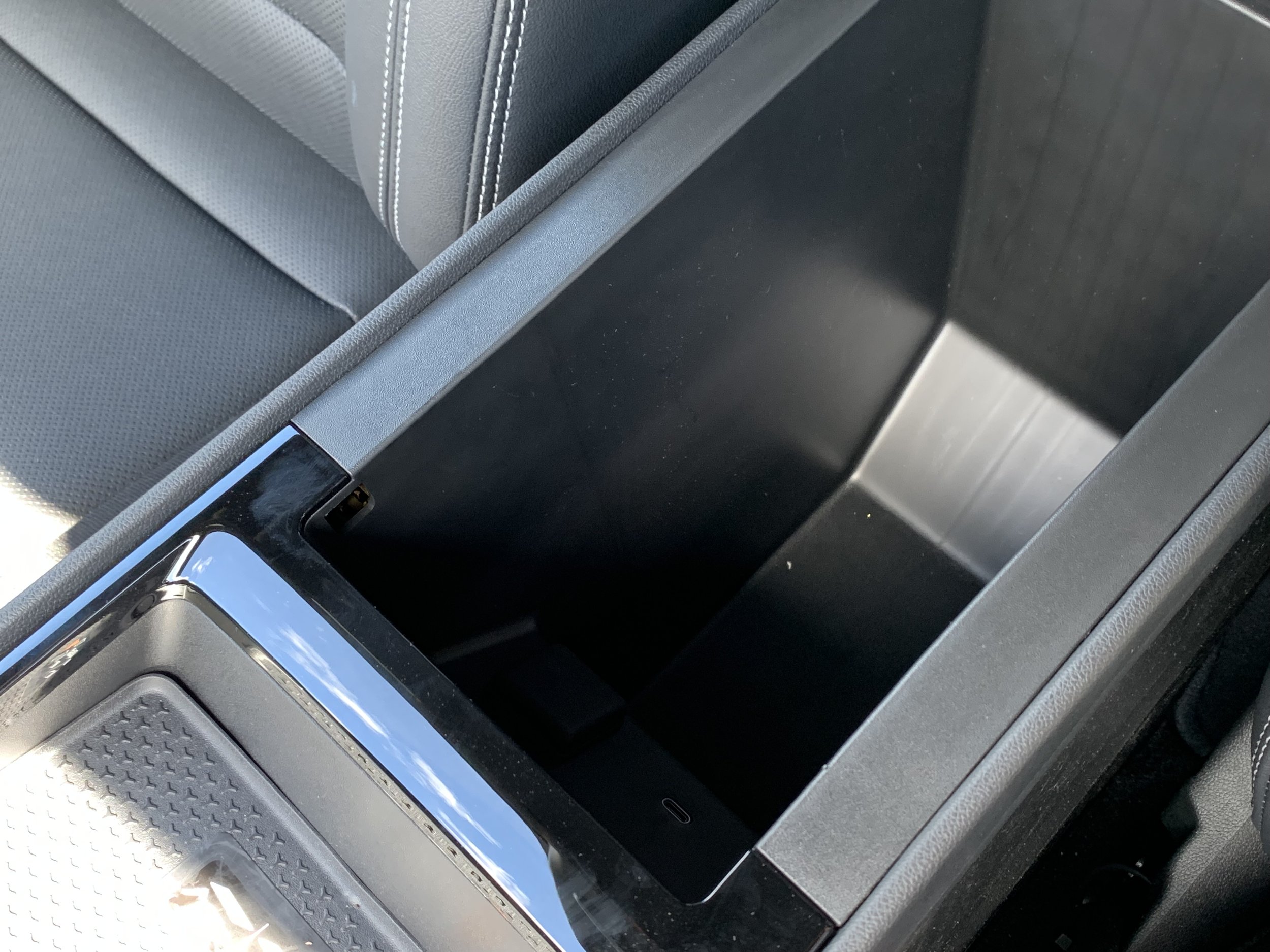
Interior Design: Great cabin with more traditional look and feel
My first impression is that the inside of the Blazer EV is very well-appointed, even in the base LT trim. The overall materials and build quality are excellent, with premium feeling switchgear. The Blazer EV integrates a 17.7-inch touchscreen nicely within the dash, which is a nice change when compared to many competitors that use a tablet style screen. Proper buttons and knobs can be found, bucking the minimalist trend seen by others. Round air vents pay homage to another Chevrolet icon, the Camaro. If you opt for the RS and SS trims, they come available with colorful leather options which provides the Blazer EV with some personality. The interior of the Blazer EV is very ordinary and lacks the gimmicks seen in other EVs. I don’t think this is a bad thing as it feels more conventional from the driver’s seat.
Round air vents can also be found in the latest Camaro
Everything on the touchscreen works well and it’s a short reach from the steering wheel. The infotainment system is easy to operate and its never a challenge to find what you’re looking for. Menu shortcuts can be found atop of the screen and on the left side as well. The navigation system is provided by Google Maps and again it works nicely. Just about everything with the Blazer EV’s infotainment system is positive and couldn’t be easier to use. Lastly, an 11-inch diagonal driver information screen is standard and can be customized to suit the driver’s individual needs.
Handsome touchscreen that's easy to reach
An electronic shifter that is a column mounted stalk is available. This is the only “weird” thing about the interior and is something that many traditional GM buyers will not be used to. While these shifters can be slightly inconvenient, they are straightforward and you get used to it after using it for extended periods of time. Many EVs have them and GM has decided to follow in this aspect, for better or worse.
Electronic column shifter stalk that's become common in EVs
A lot of EVs take advantage of having a flat floor. Many have open spaces between the front footwells or have floating center consoles. This gives off the illusion of the interior feeling more open and airy. The Blazer EV on the other hand has a traditional flip up armrest with a generous sized bin and two large cup holders, along with a phone charger. Chevrolet isn’t trying to be different here, they are just providing customers with a functional design that works and that people actually like. Meanwhile, the 8-way power driver seat is comfortable and it’s easy to find that perfect driving position. The back seats are where Chevrolet starts to take advantage of the EV’s flat floor as it’s supremely spacious. Factor in that the Blazer EV has a stretched wheelbase and that equals a vast amount of back seat legroom. Rear sets are supportive and head room is more than adequate. With the seats folded flat, rear cargo room is decent. Thanks to the Blazer EV’s long and wide body, items of those shapes fit perfectly. However, loading tall items may be a problem as height is slightly reduced due the Blazer EV’s low roofline. A storage area underneath the floor can be found that is best suited to smaller items. A front trunk is notably absent which in my opinion is unfortunate.
Roomy back seats make long trips comfortable
After plenty of time inside the Blazer EV, I must say that it’s a very easy vehicle to live with. Mostly everything is where it should be (looking at you gear shifter) and all functions are easy to find and operate. The Blazer EV is comfortable and there’s plenty of space for both people and storage. The Blazer EV has an attractive interior design that is well built and may very well be the best interior ever found in a Chevrolet.
11-inch digital driver display comes standard
How it drives: Satisfying experience
The Chevrolet Blazer EV comes with a variety of powertrain configurations. This all starts with GM’s Ultium platform that underpins the Cadillac Lyriq, GMC Hummer SUV and Pickup, Chevrolet Silverado EV, Chevrolet Equinox EV, BrightDrop Zevo vans and the Acura ZDX and Honda Prologue. This scalable platform is extremely flexible, enabling a Lego like model where different body styles can be added on top of the platform. Also, different battery modules can be included or subtracted to improve range and efficiency based on the overall goal that engineers are trying to achieve with the specific model. This platform can also support different drive systems, allowing vehicles to be AWD, RWD or FWD.
Nothing to see under the hood, no front trunk either
The Blazer EV is available in a base FWD version that only makes 241 HP. The LT trim can include an AWD option that improves power output to 282 HP and 333 lb-ft of torque. The AWD RS trim makes the same 282 HP but the optional RWD variant makes 340 HP and 325 lb-ft or torque. The SS trim has been slow to roll out but once available it will come with 557 HP and AWD. It will also be quite pricey.
Small details make the Blazer EV look aggressive
My tester was the AWD LT and I honestly think that it drives very well despite being a lower trim level. The Blazer EV is quick and an instant burst of acceleration is provided when needed. Despite feeling light and quick the Blazer EV does not push you back into your seats the same way that other EVs do. The Blazer EV is more smooth and civilized, gaining speed in a calm yet still fast manner. The Blazer EV has a low center of gravity which allows the vehicle to feel stable and planted. Body roll is basically absent as it can fly into corners and it also absorbs bumps in a way I wish other vehicles could. Refinement is key here, as the Blazer EV is ultra-comfortable and easy to drive around town. GM spent a lot of money and effort with creating a satisfying ride and it definitely shows. Road and wind noises are reduced to a point that you can hardly hear anything that’s outside.
All 4 wheels are pushed to the corners, allowing the vehicle to feel well-planted in turns
For those who like to drive aggressive, you’ll be pleased to know that brakes are on the firm side, which will inspire confidence. Meanwhile steering feel is light and at times lacking some feedback. There are different levels of regenerative braking available that will allow for complete one-pedal driving. If you choose to have the system off or on a low level, there is a paddle shifter on the steering wheel that you can press to activate or simulate the feel of regen braking when required. Simply press the paddle and the car will slow down as requested and turn its momentum into energy. I haven’t seen this before in other EVs and I think it’s cool to have. Overall, the regen system is in line with many of its competitors and works well once you get used to it.
Different drive modes are available
I know I said that this vehicle is rather normal but it’s still an EV and GM decided to add something that is different. You can’t turn the car on or off in the traditional sense. Instead, the Blazer EV will turn on as soon as you enter and turn off the moment you place the car in park and step out. Something similar can be found in the VW ID.4. I’m not too crazy about this, it’s very odd and for a vehicle that seems mostly ordinary, it’ll feel alien to traditional Chevrolet buyers.
If safety is a top priority, the Blazer EV comes with a long list of standards safety features. This includes automatic emergency braking, front pedestrian braking, lane keeping assist, and forward collision alert among others. Additionally, an enhanced parking assist is available as an extra add on. So while the Blazer EV drives really well, one issue that keeps coming up is how sensitive the automatic emergency braking is. I found it to come on too many times and panic stop in traffic even when it seemed safe. This is a bug that GM might have to fix and was the only real issue I’ve had with this vehicle.
Aerodynamic wheels and tires don't do much for performance
Basically, the Blazer EV is a great driving electric crossover. It does many things right and offers an enjoyable and satisfying driving experience. Quiet, smooth and well planted are all traits that buyers of these types of vehicles are looking for and the Blazer EV excels in all categories. And while it’s not as blisteringly fast as some EVs its more than quick enough for real world driving.
Range: Better than most
The AWD Blazer EV comes with an 85-kWh battery that will go 279 miles or 449 km on a full charge. The RWD RS gets a much larger 102-kWh battery pack and can travel 324 miles or 521 km. While not official the SS may be good for 290 miles or 467 km of driving range. Again these are solid numbers and are very much in line if not a little better than some competitors. The Tesla Model Y still is the class leader as it can travel 330 miles on a charge, but the RS trim is better than what the Nissan Ariya, Hyundai Ioniq 5 and Ford Mustang Mach-E can go.
Blazer EV charging port is hidden behind panel in the front fender
Final Thoughts: On the right path; the Blazer EV is surprisingly good
The 2024 Blazer EV is unlike anything else that Chevrolet has produced in their 112-year history. Its bold, modern and well-built. GM has been launching great EVs as of late and the Blazer EV is their first crack at making a more affordable, mainstream option that will appeal to a larger audience than expensive Cadillacs or GMC Hummers. The Blazer EV is a vehicle that is enjoyable to drive and on the inside, GM has made sure to outfit it with the best materials possible. Even in base LT trim, fit and finish is excellent and that is a huge step forward for GM, simply refreshing. While the naming can cause some confusion, make no mistake the Blazer EV is a game changing vehicle for Chevrolet and represents the future for one of America’s traditional auto makers. Blazing down a new path isn’t easy but this Chevrolet should be successful. This vehicle surprised me and is easily one of the better EV crossovers on the market. If this is just the start of GM’s EV revolution, then I’m excited to see what’s coming next.
Pricing and Specifications:
Base FWD - 241 HP
AWD (LT and RS) - 282 HP; 333 lb-ft torque
RWD (RS) - 340 HP; 325 lb-ft torque
AWD SS - 557 HP (Estimate)
Canada:
LT - $60,331
RS - $67,331
SS - Price not available
US:
LT - $48,800
RS - $53,200
SS - Price not available
Main Competitors:
Ford Mustang Mach-E, Honda Prologue, Hyundai Ioniq 5, Kia EV6, Nissan Ariya, Subaru Solterra, Tesla Model Y, Toyota Bz4x, Vinfast VF8, VW ID.4
Classic gold Chevy bow-tie logo













